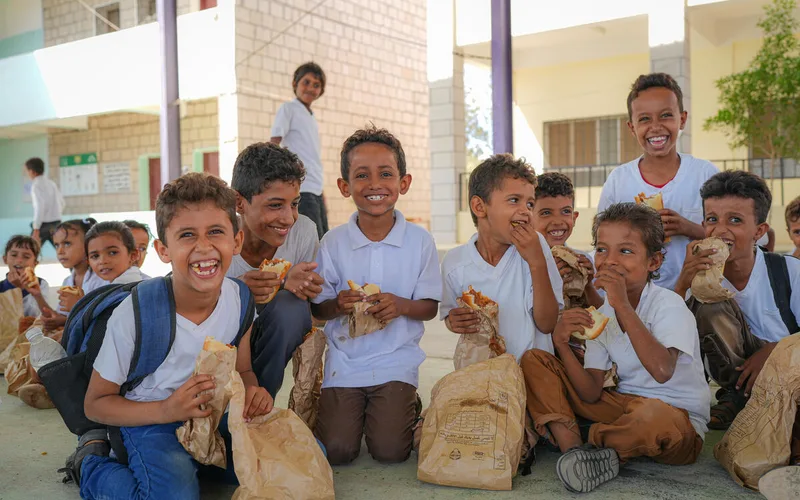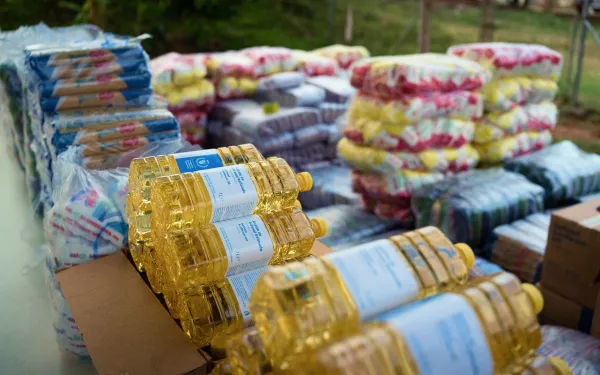

What’s inside a typical WFP food basket
Rice or flour
A staple item in many countries and vital source of daily energy.
Vegetable oil
Rich in essential fats and vitamins, supporting a healthy immune system.
Lentils or beans
Plant-based protein and fibre, helping maintain a healthy heart and gut.
Salt
Supports a healthy pregnancy and helps child development.
The food basket is based on local food preferences and diets wherever possible so the items could vary.
At least 466 million children receive school meals through government-led programmes worldwide—up 20% in the past four years.
Overview
Shared meals will provide school meals to children around the world.
Every day, millions of children around the world go to school on an empty stomach. Not having enough to eat affects children’s concentration and ability to learn. There are also many children — particularly girls — who skip school because they need to help their families at home. In conflict-affected countries, children are twice as likely to be out of school than those in stable countries — 2.5 times more likely in the case of girls. The World Food Programme (WFP) supports governments to ensure that all school-aged children have access to school meals. WFP has been working with governments for the last 60 years, setting up school feeding programs in more than 100 countries. The meals not only ensure better health and nutrition for children but also incentivises parents to keep them in school. For many children, school meals are the only meal they receive a day. Every $1 invested in school feeding yields $9 in economic returns.